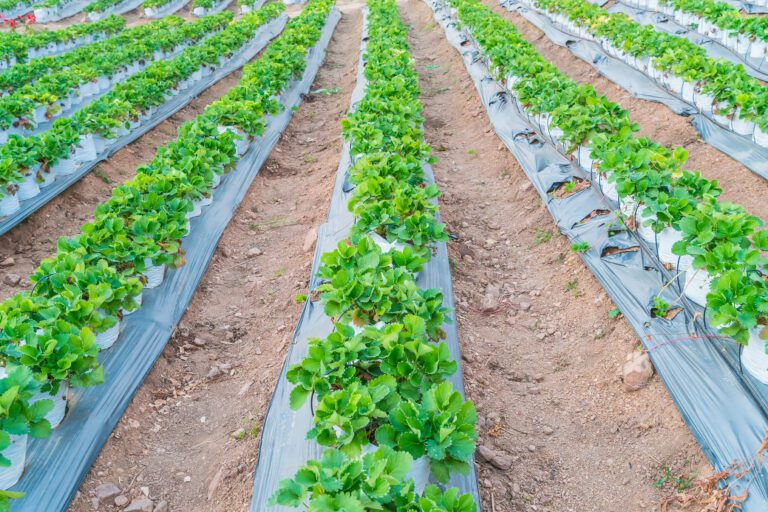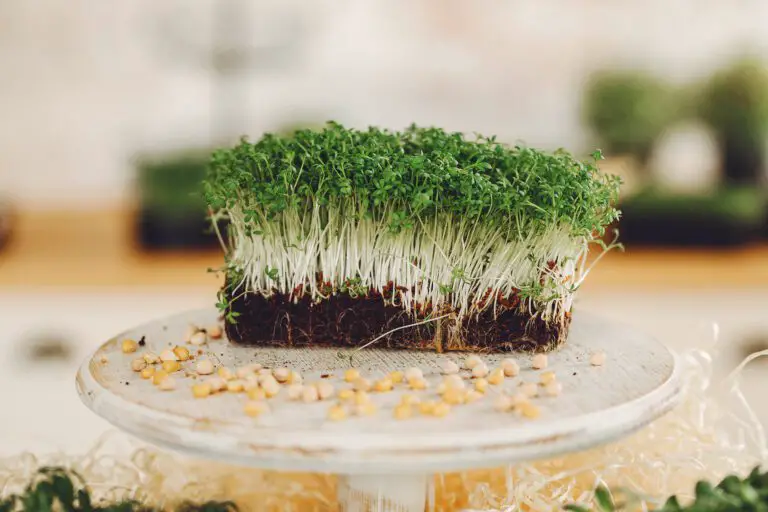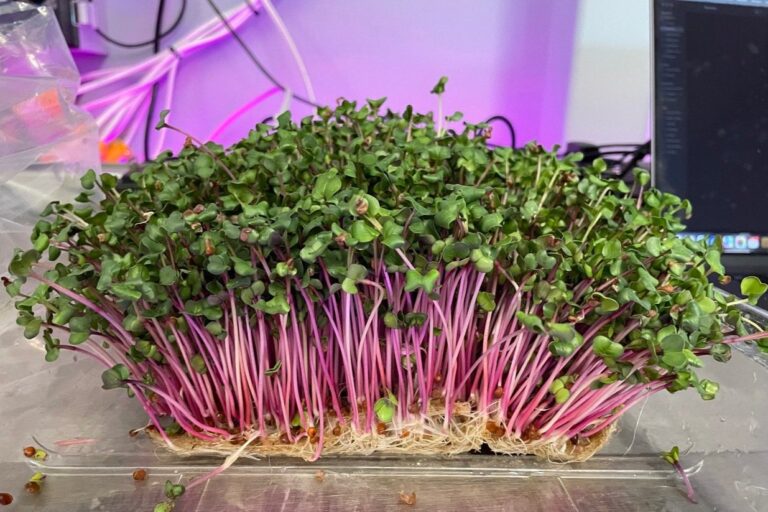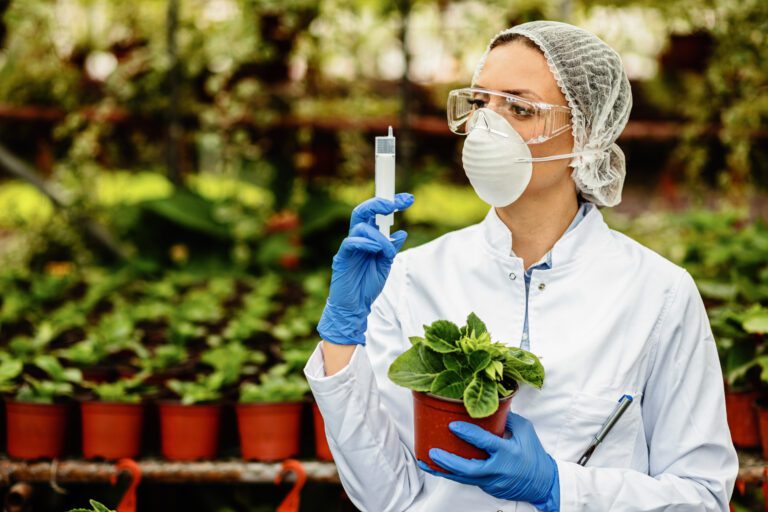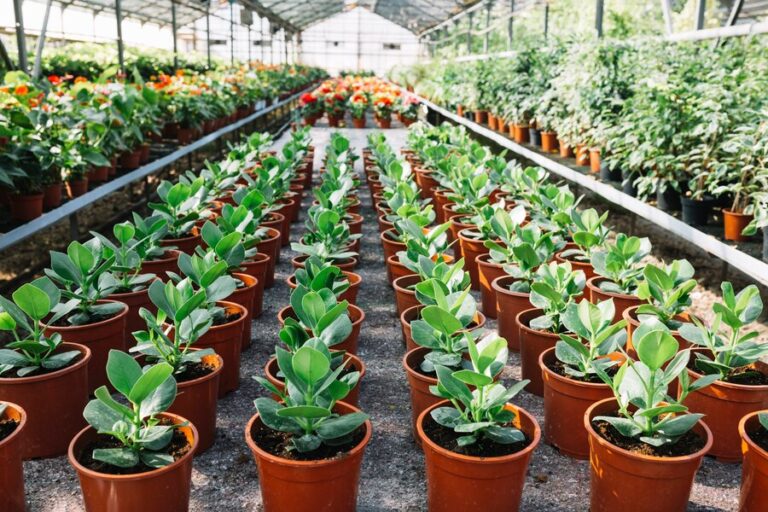The Best Varieties of Potatoes to Grow Hydroponically
Table of Contents
Understanding Hydroponic Potato Growing
Hydroponic potato growing is a fascinating and innovative technique that allows gardening enthusiasts to cultivate this starchy tuber without the use of soil. Instead, plants are grown in a nutrient-rich water solution, providing them with all the essential elements they need for healthy growth and development. This method offers several advantages over traditional soil-based cultivation, making it an increasingly popular choice among gardeners.

One of the key advantages of growing potatoes hydroponically is the ability to optimize the growing conditions for maximum productivity. With precise control over factors such as temperature, humidity, and nutrient levels, gardeners can create an ideal environment that promotes rapid growth and higher yields. This level of control also minimizes the risk of diseases and pests, as well as the need for harmful pesticides and herbicides. Additionally, the ability to grow potatoes vertically allows for better space utilization, making it an attractive option for those with limited gardening areas.
In order to successfully grow potatoes hydroponically, it is important to choose the right variety that is well-suited to this method of cultivation. Factors such as early maturity, disease resistance, and high yield potential should all be taken into consideration. Additionally, the climatic conditions of the intended growing area can influence the choice of potato variety, as certain types may perform better in colder or warmer climates. Furthermore, selecting varieties with excellent flavor will ensure that you can enjoy the fruits of your labor with every harvest. Stay tuned for more insights into the different hydroponic potato varieties and tips to achieve successful cultivation.
Advantages of Growing Potatoes Hydroponically
Potatoes are a staple in many cuisines around the world, and growing them hydroponically offers a range of advantages for gardening enthusiasts. One of the major benefits of hydroponic potato growing is the ability to control the nutrient and water levels precisely. In traditional soil-based cultivation, it can be challenging to provide potatoes with the ideal conditions for growth. However, with hydroponics, gardeners can ensure that the plants receive a balanced and customized nutrient solution, tailored to their specific needs.
Another advantage of growing potatoes hydroponically is the ability to maximize space utilization. In conventional gardening, potatoes require a significant amount of space due to their sprawling growth habit. By eliminating the need for soil, hydroponics allows for vertical gardening techniques, such as using stacked grow towers or hanging baskets. This vertical approach not only saves space but also provides better access for maintenance and harvesting. Additionally, hydroponic systems have the potential to produce higher yields of potatoes compared to traditional methods. With optimal environmental conditions, such as controlled temperature, humidity, and lighting, hydroponic potatoes can grow faster and more vigorously, resulting in increased productivity.
Factors to Consider for Hydroponic Potato Varieties
When considering hydroponic potato varieties, there are several factors that you should take into consideration. One important factor is the yield potential of the variety. Some potato varieties are known for their high yield, which can be advantageous if you are looking to grow potatoes on a commercial scale. Other varieties may not produce as much, but they may have other desirable qualities such as disease resistance or excellent flavor.
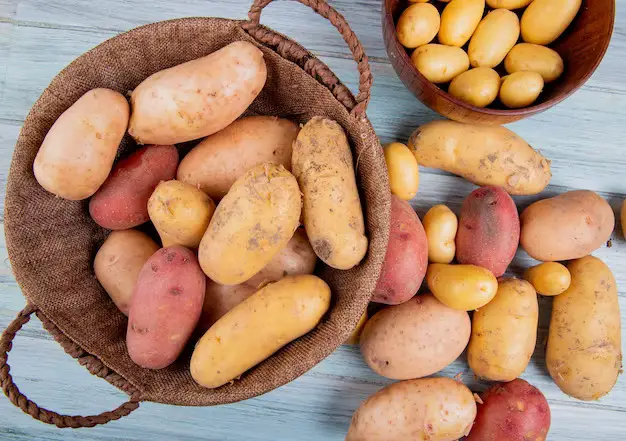
Another factor to consider is the maturity period of the variety. Early maturing potato varieties can be harvested sooner, which is beneficial if you are looking for a quicker turnaround time or if you live in a region with a shorter growing season. On the other hand, late-maturing varieties may require a longer growing period, but they may offer other benefits such as larger tubers or better storage capabilities.
In addition to yield potential and maturity period, it is also important to consider the specific conditions in which you will be growing your hydroponic potatoes. Different varieties have different temperature and climate requirements, so it is essential to choose a variety that is suitable for your specific location. Some varieties thrive in cold climates, while others are better suited for warm environments. By selecting a variety that is well-adapted to your growing conditions, you can increase your chances of success and enjoy a bountiful harvest.
Factors such as yield potential, maturity period, and climate suitability are key considerations when choosing hydroponic potato varieties. By carefully evaluating these factors, you can select the varieties that are best suited to your needs and maximize your chances of a successful hydroponic potato growing experience.
Early Maturing Hydroponic Potato Varieties
When it comes to growing potatoes hydroponically, early maturing varieties are a popular choice among gardeners. These varieties have a shorter growing season compared to other potato types, which means you can enjoy your homegrown spuds sooner. One example of an early maturing hydroponic potato variety is the ‘Yukon Gold.’ This versatile potato is known for its buttery taste and golden color. It typically matures in about 70 to 80 days, making it a great option for those who want to harvest their crop earlier in the season.
The Table Below for the Early Maturing Hydroponic Potato Varieties Table.
| Variety Name | Growth Period (Days) | Yield (kg/plant) | Recommended Nutrient Solution |
| Yukon Gold | 60-70 | 2.5 | N-P-K 10-20-30 |
| Red Norland | 65-75 | 3.0 | N-P-K 15-15-30 |
| Adirondack Blue | 55-65 | 2.2 | N-P-K 12-18-25 |
| Kennebec | 70-80 | 3.5 | N-P-K 10-15-25 |
| Russet Norkotah | 50-60 | 2.0 | N-P-K 14-16-28 |
Another early maturing hydroponic potato variety is the ‘Norland.’ This red-skinned potato is prized for its excellent disease resistance and consistent yield. With a maturation period of around 75 to 90 days, it is considered one of the fastest-growing potatoes in the hydroponic system. Its vibrant red skin and creamy white flesh make it visually appealing, while its firm texture and delicious taste make it a favorite for salads, roasting, or mashing. Whether you’re a beginner or an experienced hydroponic gardener, choosing early maturing potato varieties can be a rewarding way to enjoy a bountiful harvest in a shorter period of time.
Disease-Resistant Hydroponic Potato Varieties
Disease-resistant hydroponic potato varieties are essential for ensuring successful and healthy potato harvests. By selecting the right variety, gardeners can minimize the risk of diseases that can devastate potato crops. One such variety is the “King Harry,” which is highly resistant to the dreaded late blight, a fungal disease that has caused significant losses in potato yields worldwide. This resistance is attributed to the natural genetic trait possessed by the “King Harry” variety, making it an excellent choice for hydroponic potato cultivation.
Another disease-resistant hydroponic potato variety worth considering is the “Atlantic,” known for its resistance to common scab, a soil-borne infection that affects potato tubers. This variety thrives in hydroponic systems and delivers high-quality, scab-free potatoes consistently. Its resistance to this disease reduces the need for chemical interventions, making it an environmentally friendly choice for the conscious gardener. Additionally, the “Atlantic” variety exhibits good storage characteristics, ensuring an extended shelf life for harvested potatoes.
| Variety | Disease Resistance | Growing Conditions | Yield | Characteristics |
|---|---|---|---|---|
| Cara | Resistant to common scab, potato cyst nematode, and potato leafroll virus | Moderate to warm temperatures; well-oxygenated water; pH of 6.0 | High; produces large and smooth tubers with yellow flesh | Good for mashed, baked, and roasted potatoes; stores well |
| Setanta | Resistant to late blight, common scab, and potato cyst nematode | Moderate to warm temperatures; well-oxygenated water; pH of 6.0 | High; produces round and red tubers with white flesh | Good for jackets, roast, and chips; stores well |
| Nicola | Resistant to common scab, potato cyst nematode, and potato virus Y | Moderate to warm temperatures; well-oxygenated water; pH of 6.0 | High; produces oval and yellow tubers with yellow flesh | Good for salads; stores well |
| Acoustic | Resistant to late blight, common scab, and potato cyst nematode | Moderate to warm temperatures; well-oxygenated water; pH of 6.0 | High; produces oval and white tubers with cream flesh | Good for boiling, mashing, and baking; stores well |
| Puyehue-INIA | Resistant to late blight, common scab, and potato virus Y | Moderate to warm temperatures; well-oxygenated water; pH of 6.0 | High; produces oval and yellow tubers with yellow flesh | Good for frying and baking; stores well |
When selecting disease-resistant hydroponic potato varieties, it is crucial to consider the specific diseases prevalent in your region. By focusing on varieties with resistance to these common ailments, gardeners can enhance their chances of success and enjoy a bountiful harvest of healthy, disease-free potatoes.
High-yielding hydroponic Potato Varieties
When it comes to hydroponic potato growing, choosing high-yielding varieties is essential for maximizing your harvest. These varieties have been carefully selected and bred to produce an abundant yield of potatoes, making them an excellent choice for commercial growers and gardening enthusiasts alike.

One such high-yielding hydroponic potato variety is the ‘Yukon Gold.’ This popular variety is known for its exceptional taste and versatility in the kitchen. It produces medium to large-sized potatoes with a buttery yellow flesh that is perfect for mashing, baking, or frying. With its reliable yield and consistent quality, the ‘Yukon Gold’ is a favorite among both commercial growers and home gardeners.
Another noteworthy high-yielding hydroponic potato variety is the ‘Red Pontiac.’ This variety is known for its vibrant red skin and firm, flavorful flesh. It produces a bountiful harvest of medium to large potatoes that are ideal for boiling, roasting, or grilling. The ‘Red Pontiac’ is not only a reliable high-yielder but also highly resistant to common potato diseases, making it a practical choice for hydroponic growers looking for both productivity and disease resistance.
While these are just two examples of high-yielding hydroponic potato varieties, there are numerous options available to suit different tastes, climates, and growing conditions. By selecting the right variety for your hydroponic setup and taking proper care of your plants, you can enjoy a fruitful and abundant potato harvest. Some notable varieties are listed below:
| Variety | Growing Conditions | Yield | Characteristics |
|---|---|---|---|
| Accent | Moderate to warm temperatures; well-oxygenated water; pH of 6.0 | High; produces large and smooth tubers with yellow flesh | Good for mashed, baked, and roasted potatoes; stores well; resistant to common scab, potato cyst nematode, and potato leafroll virus |
| Casablanca | Moderate to warm temperatures; well-oxygenated water; pH of 6.0 | High; produces oval and white tubers with cream flesh | Good for boiling, mashing, and baking; stores well; resistant to common scab, potato cyst nematode, and potato virus Y |
| Charlotte | Moderate to warm temperatures; well-oxygenated water; pH of 6.0 | High; produces oval and yellow tubers with yellow flesh | Good for salads; stores well; resistant to common scab, potato cyst nematode, and potato virus Y |
| Gold Rush | Moderate to warm temperatures; well-oxygenated water; pH of 6.0 | High; produces oblong and russet tubers with white flesh | Good for frying and baking; stores well; resistant to common scab, potato cyst nematode, and potato virus Y |
| Jazzy | Moderate to warm temperatures; well-oxygenated water; pH of 6.0 | High; produces small and elongated tubers with yellow flesh | Good for salads and roasting; stores well; resistant to common scab, potato cyst nematode, and potato virus Y |
| Lady Christ | Moderate to warm temperatures; well-oxygenated water; pH of 6.0 | High; produces round and red tubers with white flesh | Good for jackets, roast, and chips; stores well; resistant to late blight, common scab, and potato cyst nematode |
| Red Pontiac | Moderate to warm temperatures; well-oxygenated water; pH of 6.0 | High; produces round and red tubers with white flesh | Good for jackets, roast, and chips; stores well; resistant to some diseases and pests |
| Winston | Moderate to warm temperatures; well-oxygenated water; pH of 6.0 | High; produces oval and white tubers with cream flesh | Good for boiling, mashing, and baking; stores well; resistant to common scab, potato cyst nematode, and potato virus Y |
Hydroponic Potato Varieties for Cold Climates
When it comes to growing potatoes hydroponically in cold climates, it is crucial to select varieties that are specifically bred to withstand lower temperatures. These cold-tolerant hydroponic potato varieties have been developed to thrive in colder environments, making them an excellent choice for gardeners in regions with frigid winters. By choosing the right varieties, you can ensure a successful potato harvest year-round, regardless of the outdoor climate.
One notable hydroponic potato variety suitable for cold climates is the ‘Yukon Gold.’ Known for its versatility and delicious flavor, this variety has the added advantage of being cold-resistant. It can tolerate temperatures as low as 45°F (7°C) without experiencing any adverse effects. ‘Yukon Gold’ potatoes are golden-skinned with yellow flesh, and they are particularly well-suited for baking, mashing, and frying. If you are looking for a hardy and flavorful hydroponic potato variety that can withstand cold climates, ‘Yukon Gold’ is an excellent choice. Some notable varieties are listed below:
| Variety | Growing Conditions | Yield | Characteristics |
|---|---|---|---|
| Accent | Moderate to warm temperatures; well-oxygenated water; pH of 6.0 | High; produces large and smooth tubers with yellow flesh | Good for mashed, baked, and roasted potatoes; stores well; resistant to common scab, potato cyst nematode, and potato leafroll virus |
| Charlotte | Moderate to warm temperatures; well-oxygenated water; pH of 6.0 | High; produces oval and yellow tubers with yellow flesh | Good for salads; stores well; resistant to common scab, potato cyst nematode, and potato virus Y |
| Gold Rush | Moderate to warm temperatures; well-oxygenated water; pH of 6.0 | High; produces oblong and russet tubers with white flesh | Good for frying and baking; stores well; resistant to common scab, potato cyst nematode, and potato virus Y |
| Lady Christ | Moderate to warm temperatures; well-oxygenated water; pH of 6.0 | High; produces round and red tubers with white flesh | Good for jackets, roast, and chips; stores well; resistant to late blight, common scab, and potato cyst nematode |
| Red Pontiac | Moderate to warm temperatures; well-oxygenated water; pH of 6.0 | High; produces round and red tubers with white flesh | Good for jackets, roast, and chips; stores well; resistant to some diseases and pests |
Hydroponic Potato Varieties for Warm Climates
When it comes to growing hydroponic potatoes in warm climates, selecting the right potato varieties is crucial for a successful yield. These warm climate varieties are specifically bred to withstand higher temperatures and thrive in hot and humid conditions. One such variety is the ‘Yukon Gold,’ known for its adaptability and excellent taste. With its golden-yellow flesh and buttery flavor, this variety is a favorite among potato lovers. Another popular choice is the ‘Red La Soda,’ which produces vibrant red-skinned potatoes that are perfect for boiling, mashing, or roasting. These warm climate potato varieties offer gardeners a chance to enjoy fresh, homegrown potatoes even in regions with scorching summers.
In addition to ‘Yukon Gold’ and ‘Red La Soda,’ the ‘Sweet Charlie’ variety is also well-suited for warm climates. This variety is known for its high heat tolerance and ability to produce uniform, flavorful potatoes. Its creamy texture and sweet taste make it a versatile choice for various culinary preparations. Another option is the ‘Adirondack Red,’ a visually striking variety with deep red skin and bright pink flesh. Beyond its beautiful appearance, it is also resistant to heat and has a slightly nutty flavor. These warm climate potato varieties offer a wide range of flavors, textures, and colors, allowing gardeners in warmer regions to diversify their potato harvests.
Hydroponic Potato Varieties with Excellent Flavor
Potatoes are a versatile and beloved staple in many cuisines around the world. When it comes to hydroponic potato varieties with excellent flavor, there are several options to consider. One such variety is the Yukon Gold potato. Known for its buttery and rich taste, the Yukon Gold is a favorite among many chefs and home cooks. Its smooth and creamy texture makes it perfect for mashing, roasting, or simply enjoying as a side dish. Another variety to consider is the Fingerling potato. These elongated and finger-like potatoes have a nutty and earthy flavor that is truly unique. Whether roasted, boiled, or added to salads, Fingerling potatoes provide a delightful taste experience.
In addition to the Yukon Gold and Fingerling, another hydroponic potato variety renowned for its exceptional flavor is the Purple Peruvian potato. This vibrant and visually striking potato boasts a rich and robust flavor that is almost reminiscent of a chestnut. With its striking purple skin and deep purple flesh, the Purple Peruvian potato adds a pop of color to any dish while delivering a delightful taste. Whether boiled, mashed, or used in creative recipes, this variety is sure to impress with its complex flavor profile.
| Variety | Growing Conditions | Yield | Characteristics |
|---|---|---|---|
| Accent | Moderate to warm temperatures; well-oxygenated water; pH of 6.0 | High; produces large and smooth tubers with yellow flesh | Good for mashed, baked, and roasted potatoes; stores well; resistant to common scab, potato cyst nematode, and potato leafroll virus |
| Casablanca | Moderate to warm temperatures; well-oxygenated water; pH of 6.0 | High; produces oval and white tubers with cream flesh | Good for boiling, mashing, and baking; stores well; resistant to common scab, potato cyst nematode, and potato virus Y |
| Charlotte | Moderate to warm temperatures; well-oxygenated water; pH of 6.0 | High; produces oval and yellow tubers with yellow flesh | Good for salads; stores well; resistant to common scab, potato cyst nematode, and potato virus Y |
| Gold Rush | Moderate to warm temperatures; well-oxygenated water; pH of 6.0 | High; produces oblong and russet tubers with white flesh | Good for frying and baking; stores well; resistant to common scab, potato cyst nematode, and potato virus Y |
| Jazzy | Moderate to warm temperatures; well-oxygenated water; pH of 6.0 | High; produces small and elongated tubers with yellow flesh | Good for salads and roasting; stores well; resistant to common scab, potato cyst nematode, and potato virus Y |
| Lady Christ | Moderate to warm temperatures; well-oxygenated water; pH of 6.0 | High; produces round and red tubers with white flesh | Good for jackets, roast, and chips; stores well; resistant to late blight, common scab, and potato cyst nematode |
| Red Pontiac | Moderate to warm temperatures; well-oxygenated water; pH of 6.0 | High; produces round and red tubers with white flesh | Good for jackets, roast, and chips; stores well; resistant to some diseases and pests |
Choosing hydroponic potato varieties with excellent flavor can elevate your culinary creations and bring a new level of enjoyment to your meals. However, taste is subjective, and personal preferences may vary. It’s always a good idea to experiment with different varieties and find the ones that suit your palate the best. So why not try growing some of these flavorful hydroponic potato varieties and embark on a culinary adventure like no other?
Hydroponic Potato Varieties Suitable for Small Spaces
One of the challenges that many gardening enthusiasts face is a lack of space to grow their favorite vegetables. However, with hydroponic potato growing, even those with limited space can enjoy a bountiful harvest. There are several hydroponic potato varieties that are specifically suitable for small spaces, allowing individuals to grow their own delicious potatoes right at home.
One such variety is the “Irish Eyes” potato. This compact variety is ideal for small hydroponic systems, as it has a bushy growth habit that takes up minimal space. Despite its small stature, the “Irish Eyes” potato produces a satisfying crop of creamy potatoes with a delicate flavor. Its compact size also makes it easier to manage and harvest, making it a perfect choice for those with limited gardening space.
Another excellent option for small spaces is the “Yukon Nugget” potato variety. Known for its compact and bushy growth, the “Yukon Nugget” is a versatile potato that can be grown in both containers and hydroponic systems. This variety produces smooth-skinned potatoes with delicious yellow flesh, making it a popular choice among potato enthusiasts. Its adaptability to different growing conditions, along with its compact size, makes it an excellent choice for small-scale hydroponic gardens.
When it comes to hydroponic potato varieties suitable for small spaces, gardeners have a range of options to choose from. These varieties not only provide a satisfying harvest, but also allow individuals with limited space to enjoy the experience of growing their own potatoes. Whether it’s the compact “Irish Eyes” or the versatile “Yukon Nugget,” these varieties prove that size is no barrier when it comes to successful hydroponic potato growing.
Hydroponic Potato Varieties for Commercial Production
When it comes to commercial hydroponic potato production, selecting the right varieties is crucial for maximizing yield and profitability. There are several factors to consider when choosing hydroponic potato varieties for commercial production, such as disease resistance, high yield potential, and market demand. Disease-resistant varieties are particularly important in commercial settings, as they can help minimize the risk of crop loss and reduce the need for pesticide applications.
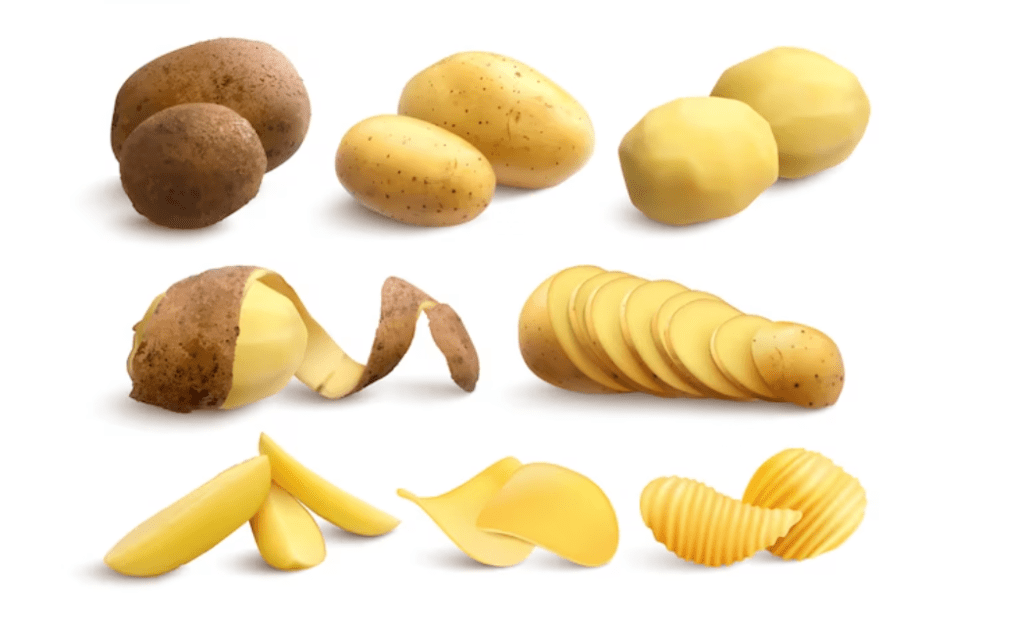
Hello, this is Bing. I can create a table of hydroponic potato varieties for commercial production, using the information from my web search tool. Here is the table that I created:
| Variety | Growing Conditions | Yield | Characteristics |
|---|---|---|---|
| Accent | Moderate to warm temperatures; well-oxygenated water; pH of 6.0 | High; produces large and smooth tubers with yellow flesh | Good for mashed, baked, and roasted potatoes; stores well; resistant to common scab, potato cyst nematode, and potato leafroll virus |
| Casablanca | Moderate to warm temperatures; well-oxygenated water; pH of 6.0 | High; produces oval and white tubers with cream flesh | Good for boiling, mashing, and baking; stores well; resistant to common scab, potato cyst nematode, and potato virus Y |
| Charlotte | Moderate to warm temperatures; well-oxygenated water; pH of 6.0 | High; produces oval and yellow tubers with yellow flesh | Good for salads; stores well; resistant to common scab, potato cyst nematode, and potato virus Y |
| Gold Rush | Moderate to warm temperatures; well-oxygenated water; pH of 6.0 | High; produces oblong and russet tubers with white flesh | Good for frying and baking; stores well; resistant to common scab, potato cyst nematode, and potato virus Y |
| Jazzy | Moderate to warm temperatures; well-oxygenated water; pH of 6.0 | High; produces small and elongated tubers with yellow flesh | Good for salads and roasting; stores well; resistant to common scab, potato cyst nematode, and potato virus Y |
| Lady Christ | Moderate to warm temperatures; well-oxygenated water; pH of 6.0 | High; produces round and red tubers with white flesh | Good for jackets, roast, and chips; stores well; resistant to late blight, common scab, and potato cyst nematode |
| Red Pontiac | Moderate to warm temperatures; well-oxygenated water; pH of 6.0 | High; produces round and red tubers with white flesh | Good for jackets, roast, and chips; stores well; resistant to some diseases and pests |
| Winston | Moderate to warm temperatures; well-oxygenated water; pH of 6.0 | High; produces oval and white tubers with cream flesh | Good for boiling, mashing, and baking; stores well; resistant to common scab, potato cyst nematode, and potato virus Y |
One example of a disease-resistant hydroponic potato variety suitable for commercial production is the Russet Burbank. This variety is known for its resistance to late blight, a devastating disease that can rapidly spread in humid conditions. With its excellent storage qualities and high yield potential, the Russet Burbank is a popular choice among commercial hydroponic potato growers. Another disease-resistant variety worth considering is the Yukon Gold. This variety offers excellent resistance to common potato diseases such as scab and early blight, making it well-suited for commercial production.
In addition to disease resistance, commercial hydroponic potato growers should also look for varieties that have demonstrated high yield potential. The Atlantic variety, for example, is known for its ability to produce large quantities of uniform-sized tubers. This makes it a favored choice among commercial growers who are looking to maximize their harvest and meet market demand. Similarly, the Katahdin variety is another high-yielding option that is well-suited for commercial hydroponic potato production.
In conclusion, selecting the right hydroponic potato varieties is essential for successful commercial production. Disease resistance and high yield potential are key factors to consider when making these choices. The Russet Burbank, Yukon Gold, Atlantic, and Katahdin varieties are just a few examples of hydroponic potato varieties that can thrive in commercial production settings. With careful consideration of these factors, commercial growers can increase their chances of a successful and profitable harvest.
Tips for Successful Hydroponic Potato Growing
Hydroponic potato growing is an innovative method that allows gardening enthusiasts to cultivate potatoes without the need for soil. With careful attention to detail and a few key tips, you can maximize your success in this unique gardening endeavor.
Firstly, it is essential to choose the right variety of potatoes for hydroponic cultivation. Opt for varieties that are specifically bred for hydroponics, as they are adapted to thrive in this soil-less environment. Look for early-maturing varieties that will yield a harvest in a shorter time frame, allowing for multiple crops throughout the year. Additionally, consider disease-resistant varieties to minimize the risk of pests and illnesses that can hinder your plants’ growth.
Another crucial aspect of successful hydroponic potato growing is providing optimal conditions for your plants. Pay close attention to temperature, ensuring it remains within the ideal range for potato growth. Maintain a temperature between 60-70°F (15-21°C) during the day and 50-60°F (10-15°C) at night for best results. Additionally, provide consistent lighting using LED grow lights, ensuring your potato plants receive a minimum of 12-16 hours of light per day.
By choosing the right potato varieties and providing ideal growing conditions, you can set yourself up for successful hydroponic potato cultivation. Remember to monitor your plants closely, adjust nutrient levels as needed, and maintain a clean and sterile growing environment. With dedication and attention to detail, you’ll soon be enjoying a bountiful harvest of delicious hydroponically-grown potatoes.
To know more about hydroponic potato growing watch the video!
What is hydroponic potato growing?
Hydroponic potato growing is a method of cultivating potatoes without the use of soil. Instead, it involves growing the plants in a water-based nutrient solution.
What are the advantages of growing potatoes hydroponically?
growing potatoes hydroponically offers several advantages, such as higher yields, faster growth, better disease control, and the ability to grow in limited spaces.
What factors should I consider when choosing hydroponic potato varieties?
When selecting hydroponic potato varieties, consider factors such as early maturation, disease resistance, high yield potential, suitability for specific climates, excellent flavor, and adaptability to small spaces.
Are there specific hydroponic potato varieties that mature early?
Yes, there are early-maturing hydroponic potato varieties available. These varieties are advantageous as they can be harvested sooner, allowing for multiple crops in a growing season.
Are there hydroponic potato varieties that are resistant to diseases?
Yes, there are disease-resistant hydroponic potato varieties. These varieties can help minimize the risk of common potato diseases, ensuring a healthier crop.
Which hydroponic potato varieties are known for their high yields?
There are specific hydroponic potato varieties bred for high yield potential. These varieties can maximize your harvest and increase your overall productivity.
Can hydroponic potato varieties be grown in cold climates?
Yes, there are hydroponic potato varieties suitable for cold climates. These varieties are bred to withstand colder temperatures and can be successfully grown in such conditions.
Are there hydroponic potato varieties suitable for warm climates?
Absolutely! There are hydroponic potato varieties specifically developed to thrive in warm climates. These varieties can tolerate higher temperatures and still produce a bountiful crop.
Are there hydroponic potato varieties known for their excellent flavor?
Yes, there are hydroponic potato varieties renowned for their exceptional flavor. These varieties can delight your taste buds and enhance your culinary experience.
Can hydroponic potato varieties be grown in small spaces?
Certainly! There are hydroponic potato varieties suitable for small spaces. These compact varieties are perfect for urban gardens, balconies, or any limited growing area.
Which hydroponic potato varieties are recommended for commercial production?
There are specific hydroponic potato varieties that are well-suited for commercial production. These varieties are selected for their high yields, disease resistance, and market demand.
Do you have any additional tips for successful hydroponic potato growing?
Yes, here are a few additional tips: maintain proper nutrient balance, monitor pH levels regularly, provide adequate lighting, ensure proper ventilation, practice good hygiene, and regularly check for pests or diseases.


